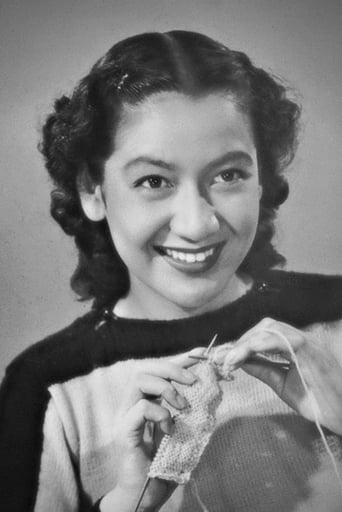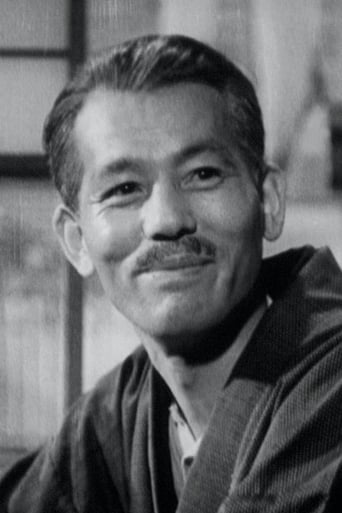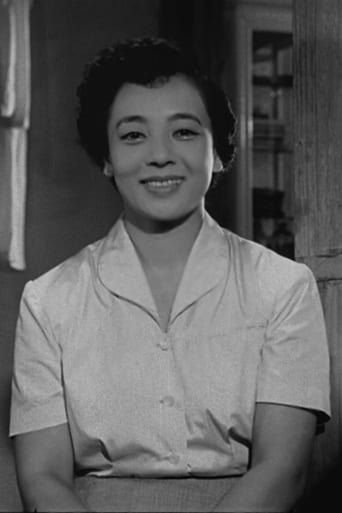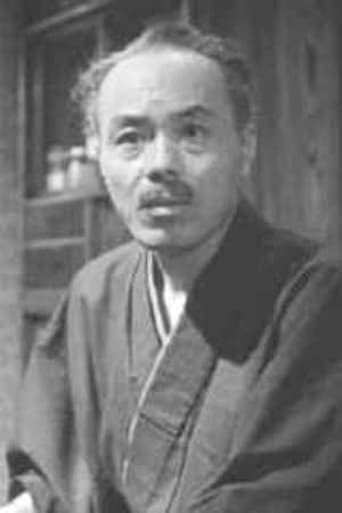Matcollis
This Movie Can Only Be Described With One Word.
WasAnnon
Slow pace in the most part of the movie.
Joanna Mccarty
Amazing worth wacthing. So good. Biased but well made with many good points.
Benas Mcloughlin
Worth seeing just to witness how winsome it is.
lasttimeisaw
My second foray into Ozu's canon, EARLY SUMMER is two years prior to TOKYO STORY (1953), the story customarily hinges on an extended household of Mamiya with Ozu's homegrown cast, and its material can be readily read as a prequel of TOKYO STORY with small identity and cast tweaks.Shukichi (Sugai) and Shige Mamiya (Higashiyama) are an elderly couple living in their suburban home near Tokyo along with the family of their eldest son Koichi (Ryû, who would in two years, take Sugai's mantra to play the husband of Higashiyama in TOKYO STORY), a physician who is married to Fumiko (Miyake) and they have two young boys, also living under the same roof is Koichi's unmarried sister Noriko (Setsuko Hora, who passed away merely last year at the venerable age of 95), who takes the centre stage in the story, since her marriage prospect will inevitably change the status quo of this harmonious family.Noriko is 28 years old, chirpily enjoys her bachelorette days, she works as an office secretary of Mr. Satake (Sano), and is thick as thieves with her unmarried school-days friend Aya (Awashima). At home, she is in good rapport with everyone, Fumiko especially. Apparently, it is the best time of the family, as Shukichi sighs with a dash of melancholy (they have another son, who has been presumably missing in the war).Mr. Satake recommend a promising 40-year-old bachelor businessman to Noriko as her potential husband-to-be, she equivocates, but the family is motivated, Koichi begins to do some background research of the candidate, which turns out quite satisfactory in his view, but Shige holds her reserve about their age difference, and it ruffles Koichi's feathers, in his defence, Noriko is not a young maiden anymore, she shouldn't be too picky either (a reactionary bias on women, still today). A discord is nimbly instigated but the irony is, Noriko doesn't even have the intention to meet the hopeful at the first place, and before soon she will shock and disappoint the family with her own choice of her future husband, which suggests a lot of hardship is in the offing for her.Even for an Ozu novice like myself, it is not difficult to discern his salient exercise of narrative lacunae, whether it is the conversation between their neighbour Tami (Sugimura) and Shige about a private detective asking about Noriko, interrupted by Shukichi's emergence and never resumes itself, or a clear shot of the said hopeful in person when Noriko and Aya are emboldened for a playful peep, even Noriko's marriage ceremony, has never be shown directly on the screen. Ozu is a master of eliding hectic actions and prefers using words, even small talks to fill the missing pages, an expedient move to facilitate the shooting and preserve his stationary style, yet, the story never slumps into monotony, all owing to the industriously composed script inundated with insightful rumination and realistic precision, penned by Ozu and his long-time collaborator Kôgo Noda.Setsuko Hara, is forever enthralling in her good-natured etiquette and photogenic effervescence, she is the ultimate screen emblem of oriental warmth and optimism, even in the single-ladies-vs.- married-women bickering, she radiates benevolence without betraying any grudge. Here, her Noriko also epitomises a modern, more independent image of a younger generation of Japanese women after WWII, no longer curbed by family persuasion, extraneous influence or social pressure, they learn to be in the driver's seat in their own lanes.Chishû Ryû, plays the peer of Hara, and Haruko Sugimura, plays her elder here, both would switch their social hierarchy in TOKYO STORY, an undeniable testimony of their uncanny and fluid versatility, along with a studious supporting cast dutifully verbalises their dialogues verbatim and gestures to a nicety. Elucidating eloquently Ozu's thematic concerns of social and familial changeover, individual awakening and humane poetry, EARLY SUMMER, is without doubt on a par with TOKYO STORY in every aspect, and mesmerises new audience to ask for more from Ozu's treasury.
WILLIAM FLANIGAN
Viewed on DVD. Film historic relevance = nine (9) stars; restoration = seven (7) stars. This is one co-writer's/director's conception of the dreary life faced by the lowest tiers of salary men and women (i.e., corporate clerks and clerk/typists) at the start of (mid 1950's) Japan's stunning post-war recovery. The parallels between life in the military and life in post-war corporate Japan seem pretty obvious from several carefully staged shots at the start of the film. Nevertheless, the director insists on hammering away at this similarity throughout the movie (in case there are some really slow-to-comprehend viewers?). The cast is lead by a group of excellent actresses who occupy all the staring roles. They uniformly deliver excellent line readings, and create the strongest impressions. All male actors play DE FACTO supporting roles. Exteriors (real, not studio simulations) are numerous, and document many contemporary, ever-day activities in suburban and urban Japan. By far these are the most fascinating scenes in the film. This includes scary shots of scores of commuters jammed together waiting for trains and standing at the VERY EDGE of station platforms without protective barriers of any kind. These are priceless views of continuing societal trust in the midst of momentous and far-from-popular cultural changes. The film (as usual for this director) is much too long. This time out the director surpasses himself with shots of clothes lines! There are at least a dozen of them. The usual shots of ugly overhead power lines are also present. There are clever in-camera exterior shots using miniature high-rise building with each window showing the same inside activity. You have seen most/all of the real building facades (photographed from the same angles) before. Likewise for seaside location scenes. Film "score" is chaotic, tedious, and usually inappropriate for (or disconnected from) what appears on screen. The music basically distracts from rather than adds to the impact of the movie. Happy music endlessly looped during a solemn wake is not particularly amusing! And it is the exact same ripped-off Italian cinema music used in other films by this director. Also if you are a huge fan of xylophones, then this film's music is for you! Restoration including subtitles is not quit there. Frame jitters occurs especially during the opening credits. Subtitles (even ones with a few words) appear before the dialog is delivered (a frequent echo-like irritation). None of the prominently photographed signs (on doors, buildings, etc.) are subtitled. If you are a Japanese culture buff, then this is a must movie. Otherwise, more on. WILLIAM FLANIGAN, PhD.
Psychojon
I watch a lot of films; it is part of my work. But I only recently stumbled across those of Ozu. I've now seen nine or ten and I've been blown away. Ozu was a genius. He did something that I've not seen any other director do; he captures the most important moments in people's lives in a realistic fashion. There is a real fly-on-the-wall character to his films, yet he does this in such a way that you genuinely feel like you are intruding on private and personal moments. There are none of the acting-up for the camera or false histrionics that we've got so used to in documentaries. In fact, these are peaceful, superficially mundane stories that somehow get to the very core of humanity. Tokyo Story and Late Spring are excellent films, but to my eyes Early Summer is the greatest. I have never seen such a human dilemma (a daughter leaves home leaving her parents both disappointed that they will no longer have her company and yet proud and relieved that she is getting on with her life) so beautifully and poignantly portrayed. If push comes to shove, I might say that this is the greatest film of all-time.
Ed Uyeshima
Having just enjoyed the quiet brilliance of Yasujiro Ozu's "Tokyo Monogatari (Tokyo Story)" for the first time last week, I was immediately drawn to another Ozu film released by the Criterion Collection last year, 1951's "Bakushû (Early Summer)". Both movies are part of his classic Noriko trilogy which uses many of the same actors playing characters with the same names but in different roles. Consequently, the great Setsuko Hara portrays a young woman named Noriko in both movies, but this time, she is the liberated daughter (rather than the forlorn daughter-in-law) and also the focal point of the story (rather than the aged parents in "Tokyo Story").The musical chairs continue with Chishu Ryu playing his real age as Noriko's strong-willed brother Koichi (rather than the resigned grandfather) and Haruko Sugimura playing older as neighbor Tomi, the mother of Noriko's prospective fiancée (versus the conniving daughter Shige). Chieko Higashiyama still plays the grandmother, but her name is not Tomi but Shige, and her husband Shukishi is portrayed by Ichirô Sugai. It's only confusing if you are looking for some kind of plot continuity between the films, but Ozu is primarily interested in reinforcing similar themes of the evolving family unit in post-WWII Japan. This time, he does it in a more comic, sometimes even ribald fashion, and while it doesn't resonate quite as deeply as "Tokyo Story", "Early Summer" is full of Ozu's shrewd observations and insights that make it emotionally affecting, especially as the story takes a surprise turn toward the end.The story here centers on the Mamiya family, who are trying to find a suitable husband for 28-year old single daughter Noriko. As typical in Japanese culture, several generations live together under one roof, and a frequent subject of conversation is Noriko's lack of a husband. However, she is a member of the new postwar breed of Japanese women. She dresses almost exclusively in Western clothes and holds down an administrative position in an office in the heart of Tokyo. In spirit, Noriko bears a strong resemblance to Elizabeth Bennett in Jane Austen's "Pride and Prejudice", a point raised by film historian Donald Richie on his informative commentary. She loves to go to dinner with her girlfriends. Of the four friends, two are married and two are unmarried. In a particularly amusing scene, the four have a spirited debate about the pros and cons of married life versus single life.Noriko is happy with her life as it is and doesn't seem to be too concerned with changing it anytime soon. Nonetheless, the family attempts to fix Noriko up with a successful, 40-year old business associate of her boss. Although polite about the matchmaking effort, she becomes more interested in her neighbor, an old classmate now widowed and left alone with a small daughter and his mother. Noriko prefers that her potential husband is an old friend and that they will slip into their new romantic relationship more easily than two complete strangers. The bigger problem, though, is that she makes her decision without consulting with her family and that's where the familial conflict arises.Hara continues to be a revelation to me, a beautiful, charismatic actress who radiates goodness and a sense of cunning mischief that is entrancing. The supporting performances are excellent with Sugimura again a standout in a surprising turn as the mother grateful to Noriko for her decision to marry her son Kenkichi. Kuniko Miyake has a bigger, more dimensional role here than in "Tokyo Story", playing yet again the brother's wife Fumiko. She and Hara have a particularly lovely scene on the beach at the end of the film, and the two have a pretty funny scene where they hide their clandestine cake slices from the somnambulant child.Chikage Awashima portrays Noriko's best friend Aya with feisty charm, goading Noriko to see the man she passed up, impersonating a country bumpkin to preview Noriko's new married life and trading innuendo-heavy barbs with Noriko's politically incorrect boss. This latter interchange is surprisingly adult for 1951, as they even joke that Noriko may be a lesbian for waiting so long to get married. The children play more prominent roles here, and Ozu really plays up their bratty insubordination as they hurl inappropriate epithets when they don't get their way, though their running away from home is the catalyst for Noriko to become attracted to Kenkichi.Yuuharu Atsuta provides the beautiful cinematography, which is gratefully captured in a fairly pristine print of the film, though I have to believe Ozu is the one most responsible for the simple yet powerful scene compositions. His now familiar low-to-the ground camera angles are used consistently in the film to replicate the perspective of someone sitting on a tatami mat. Lighter and more loosely structured than "Tokyo Story", "Early Summer" is essential viewing for Ozu aficionados and anyone interested in post-WWII Japanese society. Along with Richie's thorough commentary, the DVD package also includes a 47-minute documentary, "Ozu's Films From Behind the Scenes", which includes a table discussion with Ozu's longtime cameraman Takashi Kawamata, his sound and editing assistant Kojiro Suematsu and producer Shizuo Yamanouchi who produced six Ozu films.





